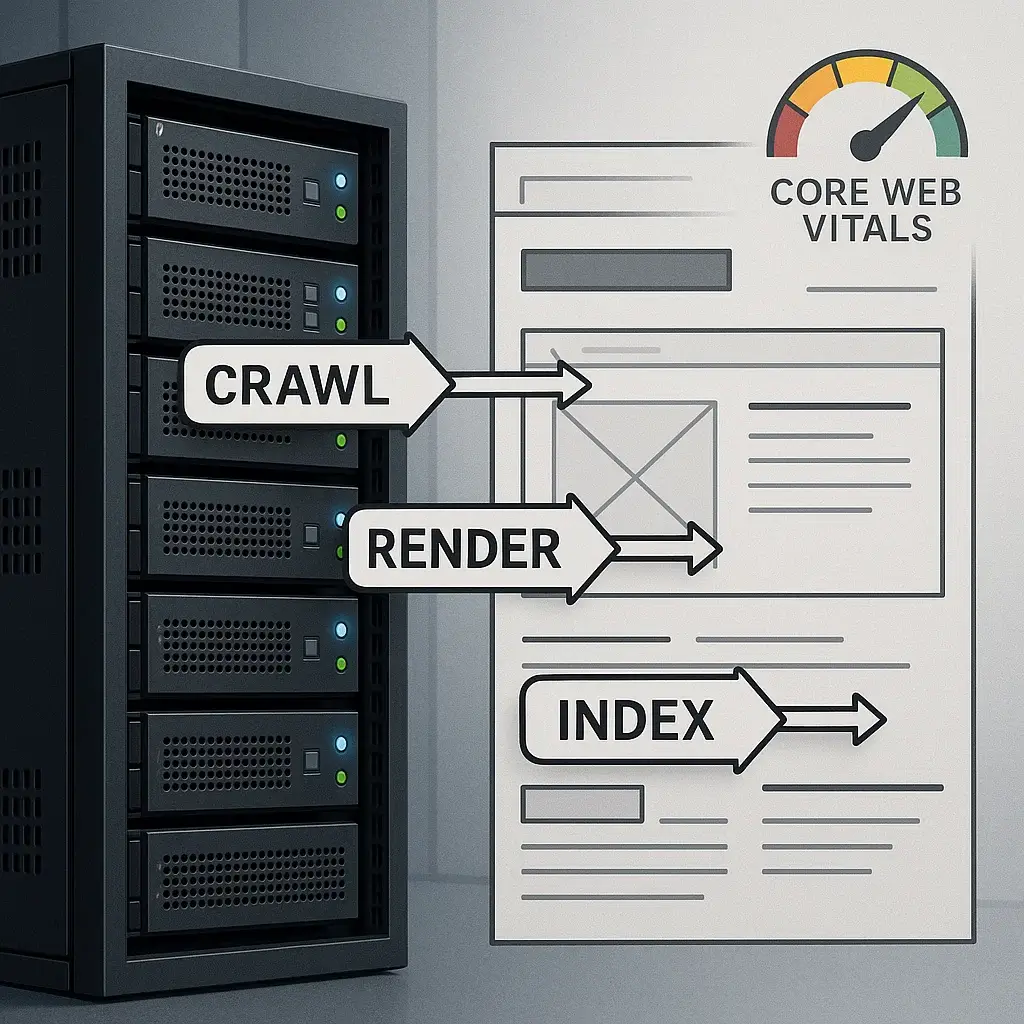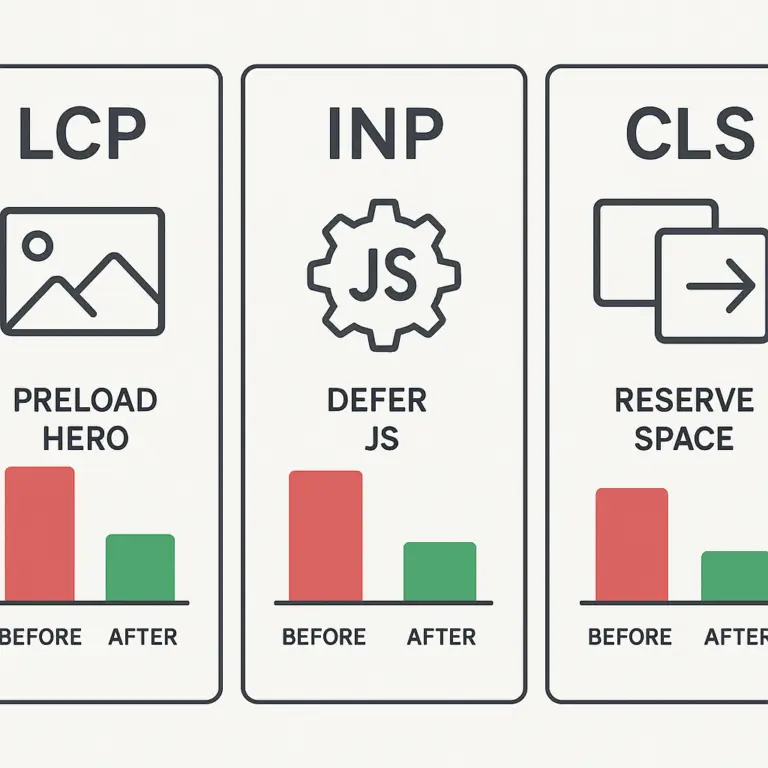Why do you need technical SEO?
If Googlebot can’t discover, render, or trust your site, content won’t rank. Our technical SEO services remove crawl and rendering friction, improve Core Web Vitals, and harden your architecture so growth compounds. Every engagement starts with a Technical SEO audit (aka diagnostic SEO audit / technical site audit) and a fix-by-impact roadmap you can ship fast. See foundations in SEO Services and deep-dive checks in SEO Audit Services.

Crawlability & discovery
Robots directives, XML sitemaps by type, shallow nav depth, orphan recovery
Indexing control
Canonicals, parameter rules, thin/utility noindex, soft-404 cleanup
Performance & CWV
LCP: hero preload, compression, critical CSS
INP: JS deferral/splitting, reduce main-thread work
CLS: fixed dimensions, font loading, reserved space
Rendering & JavaScript SEO
SSR/ISR/edge patterns, bot-accessible navigation, rendered HTML parity
Architecture & templates
Clean hierarchies for /services/, /locations/, /industries/, plus breadcrumbs & schema blocks
Internationalization
hreflang maps, self-refs, regional URLs, language meta
Schema & entities
Organization, WebSite, WebPage, Service, FAQPage, CaseStudy; Local Business for locations
Monitoring & QA
CWV monitors (field data), XML diffs, broken-link alerts, deployment guardrails
Technical SEO audit is Your roadmap prioritizes high-leverage fixes (crawl/index) first, then CWV and rendering, so you see results while the deeper items roll out
Technical SEO audit & baselines :
Full crawl, Search Console analysis, server log sampling (where available), CWV field data (CrUX), and template inventory. Output: impact-ranked backlog with owners/ETAs and risk notes.
Refs: Search Console, robots.txt.
Crawlability & discovery:
Robots/meta robots, XML sitemaps (split by content type), internal linking and nav depth, parameter handling.
Internal links: Content Marketing.
Indexing control & duplication
Canonicals (www/non-www, slash/no-slash, http/https), pagination/filters strategy, thin pages & soft-404 consolidation.
Performance & Core Web Vitals
WebP/AVIF, lazy-loading, HTTP/2 or HTTP/3, CDN caching, JS splitting/priority hints.
Ref: Core Web Vitals
Information architecture & templates
Enforce silos, unique titles/H1s, visible breadcrumbs, and consistent schema across templates.
Internationalization & localization
hreflang + canonical coherence, regional sitemaps, language switch discoverability.
See Web Design & Development for implementation support.
Schema & entity enrichment
Org, WebSite, WebPage, Service, FAQPage, CaseStudy; LocalBusiness on location pages; Speakable for hero/FAQ.
Monitoring, alerts & QA
Broken-link and 404 alerting, XML sitemap diffs, CWV field monitors, GSC annotations, regression guardrails.
Measurement & iteration
We annotate every change to tie ship → outcome (index coverage, CWV pass rates, AI/SGE surfaces, rankings, conversions).
Technical SEO audit: We revisit the audit quarterly as a technical site audit refresh to catch regressions and new opportunities.

Faster crawl & discovery of priority pages
Stable indexing with clean canonicals & parameters
Core Web Vitals pass rates (LCP, INP, CLS) that lift UX & rankings
JS content rendered and linkable for Googlebot
Duplicate/soft-404 control and fewer regressions
International accuracy (hreflang, region URLs)
Validated schema (Org, WebSite, WebPage, Service, FAQ, CaseStudy)
+38% organic sessions in 90 days after duplicate canonicals & parameter cleanup
CWV pass rate 51% → 86% via hero preload, critical CSS, JS splitting
Index coverage errors down 73%; new content indexed within hours

A technical SEO agency diagnoses and fixes crawl, indexing, speed, rendering, duplication, internationalization, and schema issues. It delivers a Technical SEO audit, prioritizes tasks by impact/effort, implements or guides fixes, and sets up monitoring to prevent regressions.
Technical SEO focuses on infrastructure (crawl, render, speed, indexation, architecture, schema). On-page SEO focuses on content and relevance (headers, copy, internal links, media, intent alignment). Both work together—technical enables content to be discovered and trusted.
Crawl/index changes can impact visibility within days to weeks; CWV/template changes typically show in 2–6 weeks as field data updates and recrawls complete.
Yes, Next.js, Nuxt, React, Vue, Angular. We align SSR/ISR/edge rendering with crawl and performance constraints and ensure critical content is bot-accessible.
Both. We collaborate with your devs/design, or implement in WordPress/Elementor with clear QA.
If Google can’t crawl or render it, it won’t rank. Get a Technical SEO audit and implementation plan that improves speed, coverage, and conversions—then keeps them stable. Start here!